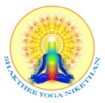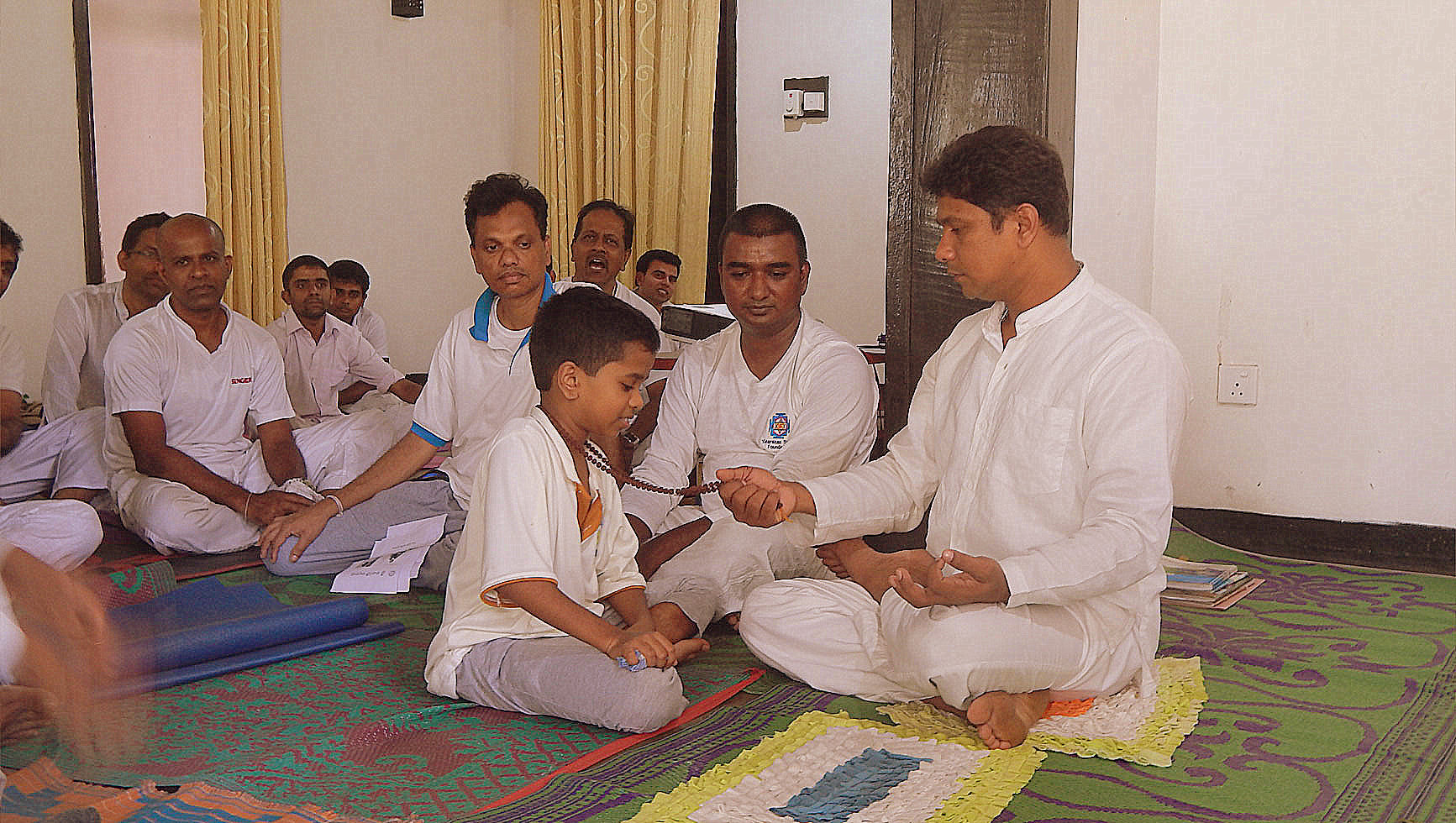
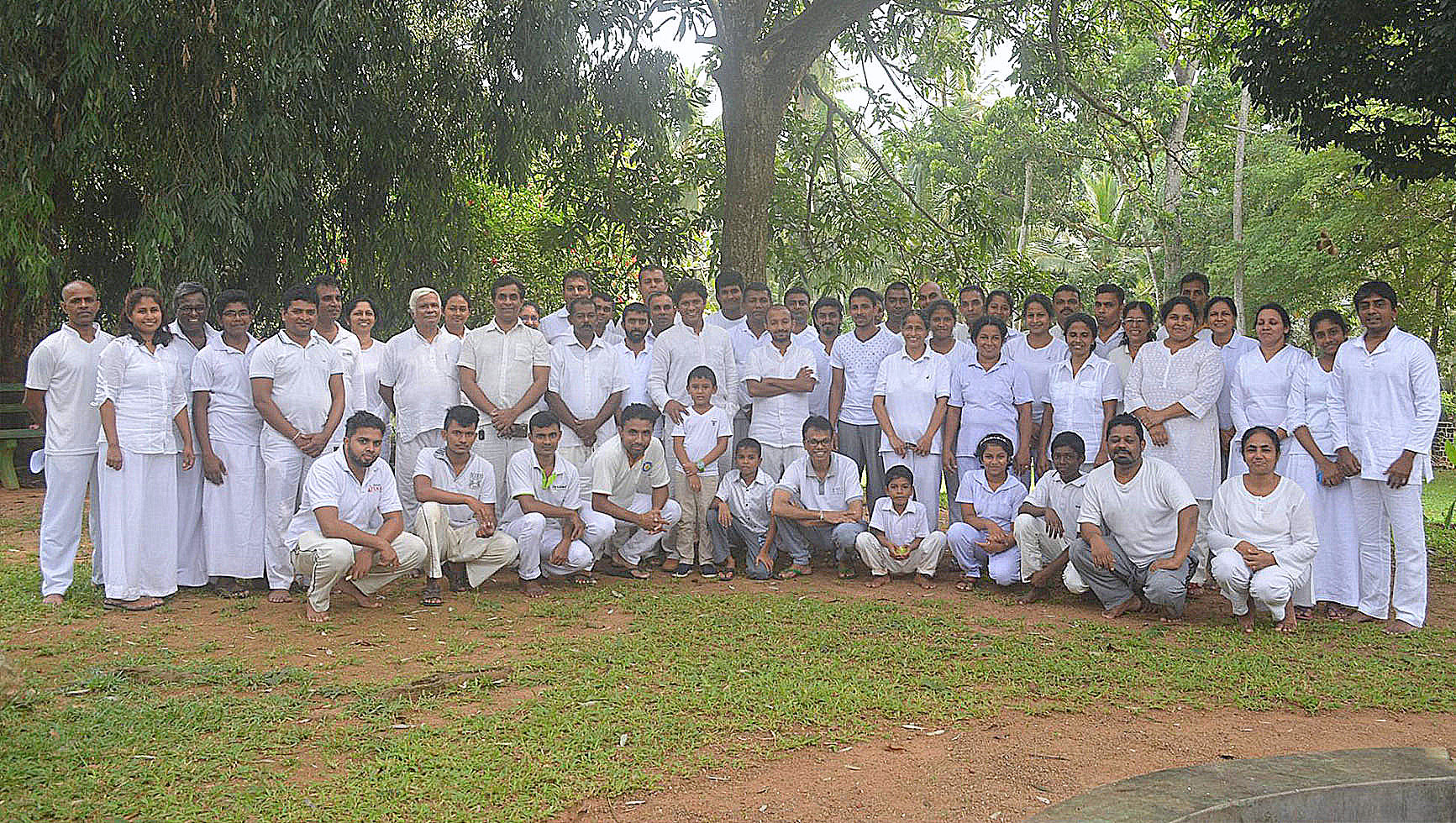
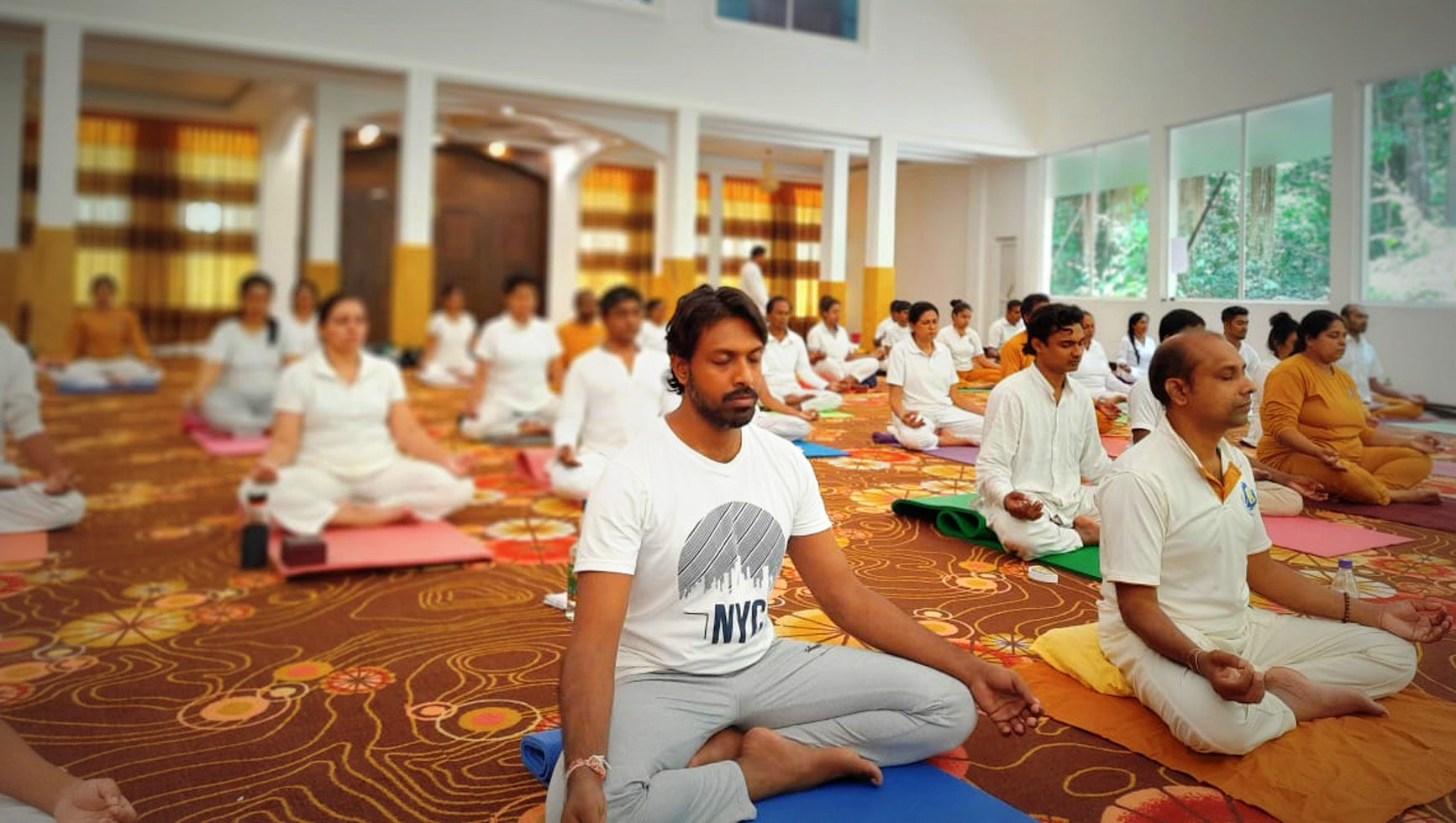
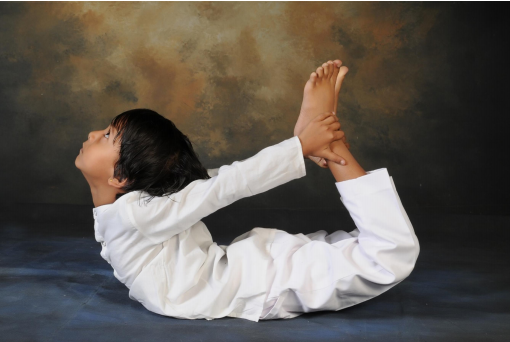
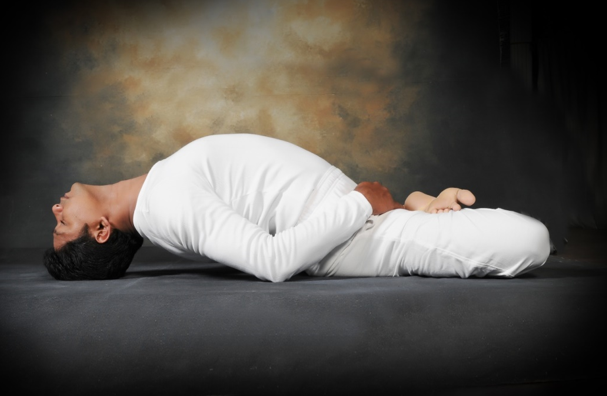
BEND YOUR MIND INSPIRE YOURSELF
You are born. All that remains is to live well and face death, the end of humanity.
From now on, never sad again, not sick and will have full of comfort with full of happiness.
To give a right to life approach with confidence, welcome to the spiritual abode of sages


MEDITATION
When we pay attention to our breath, we are learning how to return to, and remain in, the present moment—to anchor ourselves in the here and now on purpose, without judgement.

YOGA POSES GUIDE
After cleansing with the shatkarmas, asanas are practised in order to achieve physical stability and steadiness – in this context, steadiness also means stability of the body, it should be remembered that asana is a state of the body. When one can remain comfortably in one position for a long time, without any tension or physical pain, that state is called asana.
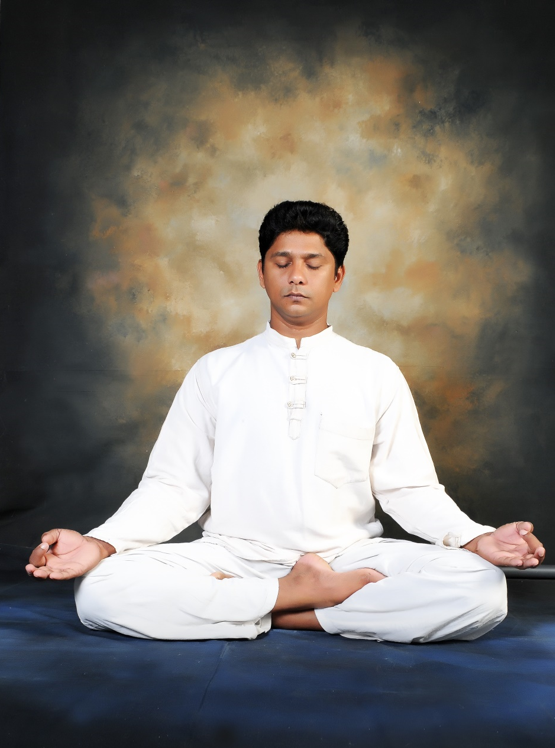
SIDDHASANA
accomplished pose

SIDDHASANA
accomplished pose
योमनस्थानकममज्रममिघमितं संपीड्य गुल्फे तरम्।
मेढोपयगथ समन्निाय मचबुकं कृ त्वा हृमद स्थामपतम्॥7॥
स्थाणुुः संयममतेस्तन्द्रयोऽचिदृशा पश्यन्ध्रुिोरन्तरम्।
ह्येतन्ोक्षकिािभेदनकर मसधासनं प्रोच्यते॥8॥
Yonisthaanakamanghrimoolaghatitam sampeedya gulphetaram; Medhroparyatha sannidhaaya chibukam kritvaa hridi sthaapitam. (7)
Sthaanuh samyamitendriyo'chaladrishaa pashyanbhruvorantaram; Hyetanmokshakavaatabhedanakaram siddhaasanam prochyate. (8)
An ascetic yogi places the heel of one foot midway between the genitals and the anus with the other heel pressing the pubis. Placing the chin on the chest, one remains motionless in a steady posture. Keeping the vision unmoved, one gazes at the eyebrow centre. Liberation is attained on perfecting this practice, which is called siddhasana. This asana is a symbol of energy and perfection; hence its name is siddhasana for men and siddha yoni asana for women. It is the best asana for the practice of meditation. More often than not it is used to exert light but steady pressure in the area of the groin linked with mooladhara chakra in special sadhanas.
Simple variation
This practice may be performed with either leg uppermost, and either heel pressing the perineum. Sit with the legs straight in front of the body. Bend the right knee and place the sole of the right foot flat against the inner left thigh, then sit on top of the right heel so that it presses the perineum, the area between the genitals and anus in men, or the vagina in women. Adjust the body until it is comfortable and the pressure of the heel is firmly applied. Bend the left leg and place the left ankle directly over the right ankle so that the ankle bones are touching, and the heels are one above the other. If possible, press the pubic bone with the left heel directly above the genitals. In men the genitals lie pressed between the two heels. In females one heel is above the other close to the vagina. If this is too difficult, the left heel can simply be placed as near as possible to the pubis. The feet are then locked into position by grasping the right toes and pulling them up into the space between the left calf and thigh. Push the toes and outer edge of the left foot into the space between the right calf and thigh muscles. In this position the legs are locked in the asana. In the version of siddhasana meant for prolonged meditation, the whole spine, neck and head are kept upright and straight without tension. The lower spine should not slump, but be kept straight so that the abdominal region is not compressed. Otherwise, due to abdominal compression, pain will be felt in the waist and lower abdomen. When the abdominal region remains unrestricted and expanded, there is no pain and the apana vayu flows properly. The abdomen and chest relax, and the hands remain on the knees in jnana mudra or chin mudra. Ensure that the knees remain in contact with the floor. Once the asana is established, imagine the body is grounded like a tree. The body should feel completely comfortable. If necessary, a thin cushion can be used to raise the buttocks, reducing the pressure on the lower portion of the ankles. Each practitioner should decide whether to bend the right or left knee first, according to persona preference. To sit in this asana the ankles must be sufficiently flexible. Do not strain in the beginning. For men, at first it may only be possible to hold the posture for one or two minutes due to pressure on the perineum, but with regular practice the discomfort will ease, and the duration will gradually increase.
Breathing:
Natural, deep or ujjayi breathing according to the meditation practised.
Contra-indications:
Those who suffer from sciatica, sacral infections, disorders in the lower spine or enlargement of the testes should not do this practice. In the full version of this asana described by Sage Gheranda, the contra-indications for jalandhara bandha and shambhavi mudra should be noted.
Benefits:
Siddhasana and siddha yoni asana hold the spinal column stable, which is very important for meditation. The lower foot presses the area of mooladhara chakra, creating a physical equivalent to moola bandha. The upper foot presses the pubis which in turn exerts pressure on the swadhisthana region, leading to a physical equivalent of vajroli/sahajoli mudra being experienced automatically. This results in waves of energy travelling from the spinal column to the brain, establishing control over the secretion of the reproductive hormones, which is essential for spiritual progress. A tingling sensation in the mooladhara region may occur when practising for prolonged periods. This sensation may continue for ten to fifteen minutes and is due to a reduction in the blood supply to the area and the rebalancing of the pranic flow in the lower chakras. This asana redirects blood circulation to the lower spine and abdomen, toning the lumbar region of the spine, the pelvis and the abdominal organs, as well as balancing the reproductive system and blood pressure. It is a useful asana for those who are prone to night emissions as the pressure on the nerves and nadis of the perineum strengthens the internal glands, bringing greater control over the sexual function. Apart from these physiological effects, siddhasana creates physical stability and increased energy. The awakening of mooladhara chakra can occur with the correct practice of this asana. In kundalini yoga, siddhasana and its female equivalent, siddhi yoni asana are practised to generate the upward movement of apana vayu.
Full practice
Sage Gheranda says that practising this asana brings mental control and a state of shoonya, thoughtlessness. When the pranas are activated, and the mind becomes thoughtless, the path of moksha, liberation, is automatically opened. Sthaanuh samyamitendriyo'chaladrishaa pashyanbhruvorantaram indicates that the chin should be touching the chest in jalandhara bandha, and then one also gazes at the eyebrow centre, which indicates shambhavi mudra. According to Sage Gheranda the final position of siddhasana includes jalandhara bandha and shambhavi mudra, which indicates he is speaking to advanced practitioners. When jalandhara bandha is practised, the chin is placed against the chest and kumbhaka, breath retention, is automatically achieved. But for how long can the breath be held? Average practitioners can only practise kumbhaka for a short period before there is a feeling of discomfort. If control over the breath can be mastered, enabling breath retention to be practised for longer periods of time, mental turmoil ceases, and physical energy is increased. The nervous system is maintained in a calm and normalized state. Practising siddhasana increases internal energy and expands the pranas, thus strengthening the capacity and stamina of the body and mind.
The secret practice
In different traditions this same practice is sometimes given different names: guptaasana, the secret posture, vajrasana, the thunderbolt posture, or muktasana, the posture for liberation, which shows its importance. In Hatha Yoga Pradipika, siddhasana is described at length and is said to be the most important of all the asanas. The full practice with shambhavi and jalandhara is given, and also the simple variation. Sage Gheranda is laconic. He simply gives the physical instructions and the practitioner is left to wonder how a meditative posture such as siddhasana can be performed with jalandhara bandha, which causes the breath to stop. In Hatha Yoga Pradipika (1:39-42), Yogi Swatmarama explains the secret. After the physical procedures are outlined, he continues: "Of all the eighty-four (important) asanas, siddhasana should always be practised. It purifies the 72,000 nadis. The yogi who meditates on the self, (atma), takes moderate and pure food and practises siddhasana for twelve years attains siddhi. When perfection is attainable through siddhasana, what is the use of practising many other asanas? When the flow of prana is stabilized, the breath stops spontaneously (kevala kumbhaka) and a mindless state (unmani) arises by itself. Thus, through securing siddhasana, the three bandhas occur by themselves." When Sage Gheranda includes shambhavi mudra and jalandhara, with its implications of kumbhaka, in his description of siddhasana, he is describing the position which facilitates a meditative process. The simple variation outlined above can be practised, but to experience the full version is not so much a practice as a state of attainment.
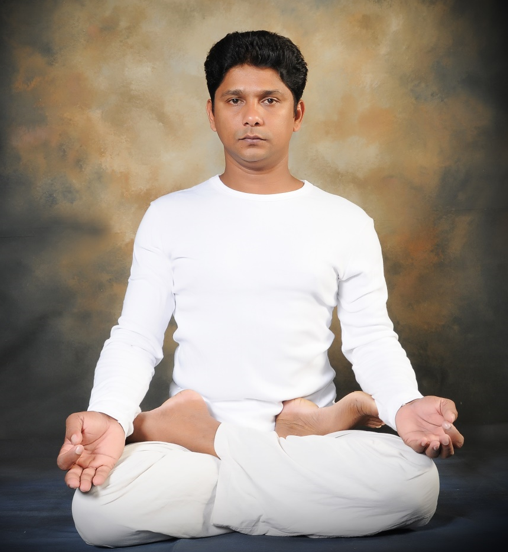
PADMASANA
lotus pose

PADMASANA
lotus pose
िामोरूपरर दमक्षणं मह चरणं संस्थाप्य िाम तथा
दक्षोरूपरर, पमश्चमेन मिमिना िृत्वा कराभ्यां दृढम्।
अङ् गुष्ठौ हृदयेमनिाय मचबुकं नासाग्रमािोकयेत्
एतद्व्यामिमिकारनाशनकर पद्मासनं प्रोच्यते॥9॥
Vaamoroopari dakshinam hi charanam samsthaapya vaamam tathaa, Dakshoroopari paschimena vidhinaa dhritvaa karaabhyaam dridham; Angushthau hridhaye nidhaaya chibukam naasaagramaalokayet, Etadvyaadhivikaaranaashanakaram padmaasanam prochyate.
Keeping the left foot on the right thigh and the right foot on the left thigh, bring the arms behind the back and catch hold of the left big toe with the right hand and the right big toe firmly with the left hand, look at the nosetip, keeping the chin in contact with the heart. It eradicates all diseases. It is called padmasana.
Padmasana is one of the best asanas for meditation as the body can be completely stable for a long time. In the beginning, sitting in this asana may seem difficult, but with regular practice it is perfected. In the version of padmasana designed for prolonged meditation practices, the trunk and head remain upright. In the version described by Sage Gheranda, the neck is bent forward in jalandhara bandha. However, in both versions the body is firm and steady, as if made of stone, and the position of the legs and feet provides a firm base.
Simple variation
Sit with the legs straight out in front of the body and separate the feet. Next, place one foot on the thigh of the other leg and the second foot on the thigh of the first leg. The soles should be facing upwards with the heels touching the lower abdomen. In the final position both knees are in contact with the floor. Try to keep th head and back upright and straight without exerting any force. Close the eyes and let the hands rest on the knees in chin or jnana mudra. This is the position generally accepted as padmasana.
Full practice
The asana corresponding to Sage Gheranda's description is now usually called baddha padmasana, the bound lotus pose. It means, one is locked into padmasana. To do this, cross the arms behind the body, firmly holding the right big toe with the left hand and the left big toe with th right hand. Sage Gheranda further says, hridaye nidhaaya chibukam naasaagramaalokayet, bring the chin to the hear and focus at the nosetip, which means that Jalandhara bandha and nasikagra drishti are included in the final position.

Precautions:
Preparatory practices are needed to make the hips, knees and ankles flexible before assuming padmasana. The pawanmuktasana series part 1 should be practised for some months or years until the practice can be performed with ease (refer to Asana Pranayama Mudra Bandha by Swami Satyananda Saraswati). The body should not be forced into padmasana if it lacks flexibility. To begin with, only hold the pose for a short time. The flexibility of the ankles and knees is not improved by bearing pain when the tendons and nerves of the body warn that they are under stress.
Contra-indications:
People suffering from sciatica, sacral infections or weak or injured knees should not perform this asana. It is not advisable during pregnancy as the circulation in the legs is reduced. In the full version of this asana described by Sage Gheranda, the contraindications for jalandhara bandha and nasikagra drishti should also be noted.
Benefits:
Padmasana is helpful in achieving physical and mental stability and peace. This is not simply a belief, but a physiological fact. It has been shown that during such asanas, sensations emanating from the lower spinal column through a group of nadis enter the brain, calming the nervous system. The experience of mental peace subsequently enhances physical health. In padmasana, pressure is exerted on the lower vertebral column, resulting in relaxation of the nervous system. The breathing becomes slow, muscular tension is reduced and the blood pressure is lowered. Physical stability induces mental stability. Due to the positioning of the feet and the pressure exerted on the thighs, the circulation of blood to the lower limbs is reduced and the blood flow to the abdomen is increased, activating the digestive fire and increasing the appetite. Ida and pingala are the two main nadis located along the vertebral column. Their influence spreads to every part of the body. These nadis have a relationship with the nerves carrying sensory information to the brain, providing knowledge and enabling awareness to arise. While in padmasana, this process of receiving and acting on sensory input is subdued. Physiologically, this means that reduced stimulation takes place and there is a state of calmness. During this process, beta, alpha and theta Waves are generated. Padmasana also facilitates the experience of meditation by directing the flow of prana from mooladhara to sahasrara. The text says that padmasana includes jalandhara bandha and nasikagra drishti. The implications of jalandhara bandha and the ensuing kumbhaka have been commented on while discussing siddhasana. The same applies here. Also, in nasikagra drishti, the eyes should be half open and the gaze should be fixed at the nosetip. This is a very effective technique for internalizing the mind and a very powerful way of making chitta one-pointed and peaceful. The verse also states that the practice of padmasana destroys or eradicates diseases but notice that practically the same thing is said about all the asanas. At the end of the description of each asana, it is stated that practising it removes diseases. Even if it is understood that the practice of these static asanas brings the mental benefits of a peaceful mind and a reduction in thoughts and internal excitement, doubts may remain about the removal of physical ailments. Therefore, it needs to be understood how yoga works to overcome disease.
Yogic management of disease Diseases
which originate from the body and then influence the mind are called somopsychic diseases. They may be due to bacteria or external impurities entering the body. Diseases which originate in the mind and then influence the body are called psychosomatic diseases. Diseases are therefore of two types and, according to yoga, eighty percent of physical diseases originate in the mind. According to this principle, when the mind is peaceful and stable, when it is calm and no longer excited, when internal tension and affliction are absent, there is also an effect on the body. The body automatically starts to become more controlled and balanced. Modern scientific medicine tends to treat the symptoms of a disease. Headache is a symptom, not a disease. Taking a painkilling tablet such as aspirin cures symptom, not the the cause. Asthma is also a symptom. Taking medicine or spraying a bronchodilator expands the airways for a while, but the disease remains and is not rooted out. Diabetes is also a symptom. In diabetes the pancreas is not producing sufficient insulin. The insulin can be replaced by injection, but this does not correct the functioning of the pancreas. It has often been observed that yogic practices heal many physical diseases. With the practice of yoga nidra, the body and antahkarana, the inner apparatus consisting of ego, intellect, memory and thought/counter-thought, attains a state of rest. Tension, worries and distress are removed. Japa increases selfconfidence. Pranayama enhances the immune power of the body and balances the pranas. Yoga uses these principles for treatment. Often it may appear that the practices which are prescribed could aggravate a disease, but those practices leave a positive effect on the mind, brain, nervous system and endocrine glands and enable them to function properly. It is believed that if the body becomes stable, the mind becomes steady, and that stability of the mind influences the body. Daily practice establishes and regulates the healthy at-ease state of the body and mind in which dis-ease is eradicated. That is why for almost every asana it is said, sarva vyaadhi vinaashakam, all diseases are destroyed.
Meditation in padmasana
In Hatha Yoga Pradipika, padmasana is counted as one of the four most important asanas; both the simple and bound variations are hinted at. The basic position of the limbs, jalandhara bandha and nasikagra drishti are the same as in Gheranda Samhita, with the added detail of pressing the tongue behind the teeth. However, when describing the benefits of the posture (HYP 1:48-49), Yogi Swatmarama's instruction is to have the palms one on top of the other, i.e. the hands are released and a description is given of the technique for each inhalation and exhalation, indicating that jalandhara bandha must be released: “Keeping the palms one above the other, chin on the chest, and concentrating the mind on the Sell, repeatedly inhaled prana downwards. (Thus, joining the two) one gets draw the vital air up from the anal region and bring thethe highest knowledge by awakening the shakti. The yogi who, seated in padmasana, inhales through the entrances of the nadis and fills them with vital air (maruta) undoubtedly gains liberation." Again, it can be seen that the practice should be learned from an experienced guide. Sitting in padmasana is not just a matter of increasing physical flexibility. Rather, the physical posture facilitates raising the energy and the mental capacity, so that one becomes able to concentrate on the inner self.

SWASTIKASANA
auspicious pose

SWASTIKASANA
auspicious pose
जानमिोरन्तरेकृ त्वा योगी पादतिेउभे।
ऋजुकायसमासीनुः स्वस्तिकं तत्प्रचक्षते॥ 14 ।।
Jaanoorvorantare kritvaa yogee paadatale ubhe; Rijukaayasamaaseenah svastikam tatprachakshate.
Placing both the soles between the thighs and knees, adopt a triangular posture and sit with a balanced feeling. This is called swastikasana.
Swastikasana, the auspicious pose, is one of the main meditation asanas recommended by Sage Gheranda.
Technique
Sit with the legs stretched out in front of the body. Bending the left knee, place the sole of the left foot against the inside of the right thigh so that the heel does not touch the perineum. Bending the right knee, place the right foot over the left, as in bhadrasana. Grasp the toes of the left foot and pull them up into the space between the right call and thigh and place the right foot in the space between the left thigh and calf muscle. The toes of both feet remain pressed between the thighs and calves. The heels should not touch the groin. The knees should be firmly on the floor and the spine upright. Place the hands on the knees in chin or jnana mudra or rest them in the lap. Close the eyes and relax the whole body. Adjust the body to ensure that the asana is comfortable. This simple practice makes the body stable.
Contra-indications:
This asana should not be performed by people suffering from sciatica and sacral infections.
Benefits:
Swastikasana has the same benefits as the simple variation of siddhasana but at a reduced level, as the chakra locations are not directly stimulated. It is very useful for extended periods of sitting if one lacks the flexibility in the knees and ankles required for siddhasana.
Practice note:
The main difference between the simple variation of siddhasana and swastikasana is that in siddhasana the heels remain one over the other and the feet are inserted between the thighs and calves. In swastikasana, only the toes are inserted, and the heel does not exert pressure on the perineum. It could be said that swastika sana is a simplified variation of siddhasana. It is used as a stable asana for meditation.
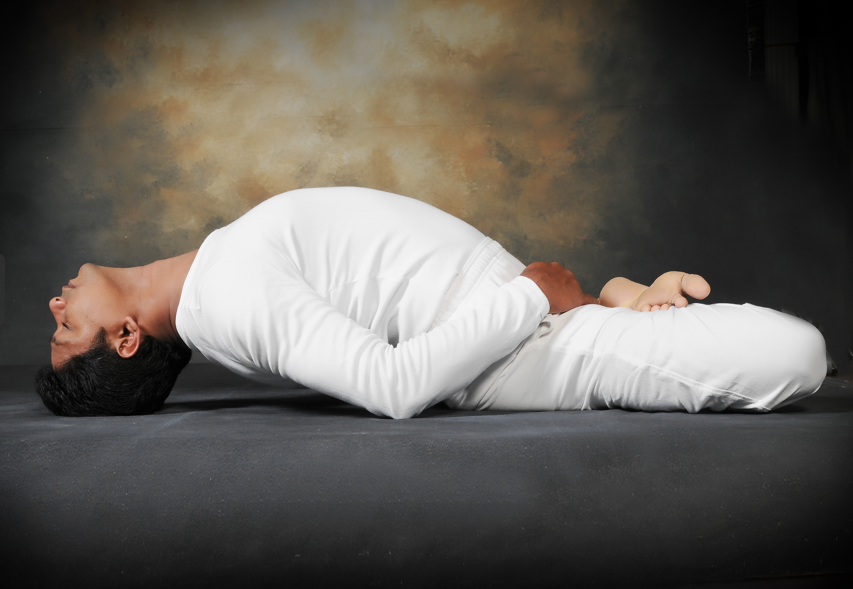
MATSYASANA
fish pose

MATSYASANA
fish pose
मुि◌प᳑ासनं कृ ᭜वा उᱫानशयनंचरेत्।
फॅ पगरा᭤यां मशरो ि◌◌े᭬Ჷं रोगᲩंमा᭜᭭यमासनम्॥22॥
Muktapadmaasanam kritvaa uttaanashayanam charet; Koorparaabhyaam shiro veshtyam rogaghnam maatsyamaasanam. In the position of mukta padmasana bring the elbows of both hands around the head and lie flat on the floor. This destroyer of diseases is called matsyasana.
The asana, generally known as baddha padmasana, was described by Sage Gheranda as padmasana in the second Verse. When he refers here to mukta padmasana, it indicates that the arms are not locked behind the back. It is usually thought of as the 'normal' padmasana. This is the starting position.
Variation 1
Sitting in padmasana, bend backwards, leaning on the elbows for support, arching the upper back and neck as the crown the head is lowered to the floor. The elbows remain pressed against the floor at the side of the body. The legs and thighs rest on the floor in the position of padmasana, and the spine is in an arched position like a bridge. The crown of the head is in contact with the floor. Adjust the position of the head to maximize the arch in the back. To begin with, the elbows help to support the weight of the body. Relax the arms and the whole body, allowing the head, buttocks and legs to support the weight of the body. Close the eyes and breathe slowly and deeply. Return to the starting position, reversing the order of movements. Repeat the asana, with the legs crossed the other way.
Full practice
The asana as described by Sage Gheranda requires greater flexibility. The starting position is the same. Then, if Variation I can be held comfortably without strain, gently release the back on to the floor. Instead of the weight of the body being supported on the crown of the head, it is distributed to those parts of the back in contact with the floor and the buttocks and to me extent the legs, which remain folded into padmasana. The elbows are folded around the head, opening the chest and shoulders. The back of the head rests on the floor.
Breathing:
In the final position the breathing is som and deep. Experience the breath in the abdomen. Practising sheetkari pranayama in the final position makes the voice sweet and steady.
Duration:
The final position can be held for up to five minutes. For general health purposes, one to three minutes is adequate.
Awareness:
Physically, on the abdomen, chest, neck, head and breath. For spiritual purposes, the point of concentration is vishuddhi chakra, where the mind is fixed for meditation.
Sequence:
Halasana, vipareeta karani asana or sarvangasana are the ideal counterposes for matsyasana as they stretch the neck in the opposite direction, releasing any muscular tension,
Contra-indications:
People who suffer from heart disease, peptic ulcers, hernia, back conditions or any serious illness should not practise this asana. It should not be attempted during pregnancy.
Benefits:
This asana stretches the intestines and tones the abdominal organs and is useful for all abdominal ailments. It also relieves inflamed and bleeding piles. In hatha yoga it has been suggested as a practice to relieve constipation. Drink two or three glasses of water and remain in the asana for as long as possible. The pelvic region is given a good stretch and the pressure of the feet on the thighs greatly reduces blood circulation in the legs, diverting it to the pelvic organs. This asana helps to prevent and remove disorders of the reproductive system. If practised prior to pregnancy, it can also help alleviate pain in the lower back which may be experienced during pregnancy. This asana recirculates stagnant blood in the back. Cervical spondylitis and stress in the lower back are relieved. With this practice, expansion of the lungs and deep respiration take place, alleviating disorders such as asthma, bronchitis or kapha dosha imbalances. When the neck is swollen, especially in tonsillitis, massaging the neck in this position helps to remove the swelling. The function of the thyroid gland is regulated, and the thymus gland stimulated, boosting the immune system, Youthfulness and vitality are increased. Although the full practice of this asana requires greater flexibility, once achieved it can be held for long periods of time without strain, giving a feeling of openness to meditation practice.
Practice note:
It is important that the body is slowly lowered into and raised from the final position by using the elbows as a support. The movement should be performed with control and care the spine is easily injured by sudden, jerking movements

DHANURASANA
bow pose

DHANURASANA
bow pose
ᮧसायगपादौ भुिम द᭛डᱨपौ करौ च पृ᳧िे◌◌ृतपादयुमम्।
कृ ᭜वा ि◌नुि◌ग᭜परᳯरमतगता᭑ग मनग᳒तेि◌◌ैि◌नुरासन तत।्। 19।।
Prasaarya paadau bhuvi dandaroopau karou cha prishthe dhritapaadayugmam; Kritwaa dhanurvatparivartitaangam nigadyate vai dhanuraasanam tat.
Stretch both legs straight on the floor like sticks. Taking both hands towards the back, catch hold of both feet and let the body acquire the shape of a bow. According to yogis this is dhanurasana. Again, dhanurasana is one of the asanas recommended in Hatha Yoga Pradipika (1:25), where the description is even more laconic than Sage Gheranda's: "Holding the toes with the hands, pull them up to the ears as if drawing a bow. This is called dhanurasana."
Technique
Lie flat on the stomach with the legs straight and feet together, and the arms and hands beside the body. Bend the knees and bring the heels close to the buttocks. Catch hold of the feet with the hands. Place the chin on the floor. Hold the big toes in such a way that that the thumbs point towards the soles of the feet while the fingers grip the toes. Tense the leg muscles and push the feet away from the body. Arch the back, lifting the thighs, chest and head together, pulling the feet as close to the head as possible without straining. Keep the arms straight. In order to raise the body further, first bring the hands to shoulder level, then above shoulder level. The body should resemble a fully stretched bow. The body is to be tensed so that the hands, feet, spine, head and neck become hard and tight. In the final position the head is tilted back, and the abdomen supports the entire weight of the body. The only muscular contraction is in the legs. The back and arms remain relaxed. Hold the final position as long as is comfortable. Slowly relax the leg muscles and lower the legs, chest and head to the starting position. Relax in the starting position until the breathing returns to normal. This is one round.
Variation:
While in the position of dhanurasana, the body can be rocked to and fro on the abdomen.
Sequence:
This asana should follow or precede a forward bending asana such as paschimottanasana.
Contra-indications:
Do not practise dhanurasana if suffering from a weak heart, high blood pressure, hernia, colitis, peptic or duodenal ulcers. Dhanurasana should not be practised at night as it stimulates the adrenal glands and sympathetic nervous system.
Benefits:
This asana reconditions the entire alimentary canal. When the body is rocked forward and backward, the liver, abdominal organs and muscles are massaged. The pancreas and adrenal glands are toned, and their secretions balanced. The kidneys are massaged, and excess weight is reduced around the abdominal area. This leads to improved functioning of the digestive, excretory and reproductive organs and helps to remove gastrointestinal disorders, dyspepsia, chronic constipation and sluggishness of the liver. The spinal column is realigned, and the ligaments, muscles and nerves are activated, removing stiffness. Dhanurasana helps to correct hunching in the upper back. Easier variations are prescribed especially for the treatment of spinal disorders, such as slipped disc, spondylitis or sciatica. Dhanurasana is recommended for the management of diabetes, incontinence, digestive disorders, menstrual disorders and, under special guidance, cervical spondylitis. It is heplpful in regulating the functioning of the cervical and thoracic sympathetic nerves and improving respiration.
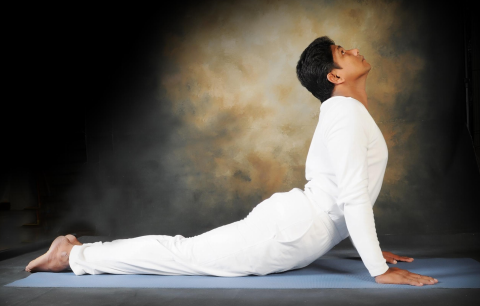
BHUJANGASANA
cobra pose

BHUJANGASANA
cobra pose
अङ् गु᳧नामभपयग᭠तिमोभममौ च िम᭠यसेत्।
ि◌रां करिता᭤यां ि◌◌ृ᭜वो᭟गᭅशीषगफणीि◌ मह ॥42॥
देहािमि◌गधगतेमन᭜यं िसगरोगिमनाशनम्।
जागमतगभुज᭑गीदेि◌◌ी भुज᭑गासनसाि◌नात्॥43।।
Angushthanaabhiparyantamadhobhoomau cha vinyaset; Dharaam karatalaabhyaam dhritvordhvasheersham phaneeva hi.(42)
Dehaagnirvarddhate nityam sarvarogavinaashanam; Jaagarti bhujangeedevee bhujangaasanasaadhanaat. (43)
Keep the body from the toes to the navel on the floor and placing the palms of the hands also firmly on the floor, raise the head like a snake. This is called bhujangasana. The fire of the body increases, all diseases are destroyed and kundalini shakti is awakened by the practice of bhujangasana.
Technique
Lie flat on the stomach with the legs straight, feet together and the soles of the feet uppermost and relaxed. Place the palms of the hands flat on the floor, below and slightly to the side of the shoulders, with the fingers together and pointing forward. The arms should be positioned so that the elbows point backward and areclose to the sides of the body. Rest the forehead on the floor and close the eyes. Slowly raise the upper part of the trunk of the body, keeping the navel region on the floor. The lower portion of the body from the toes to the navel remains in a relaxed state. The head is slowly raised like the hood of a snake. Be aware of using the neck muscles first while starting to raise the head, and then the back muscles to raise the trunk Then use the arm muscles to raise the trunk further and arch the back. Gently tilt the head backward so that the chin points forward and the back of the neck is compressed. In the final position, the pubic bone remains in contact with the floor and the navel touches the floor or is raised a maximum of 3 cm. If the navel is raised too high, the bend tends to be in the knees and not in the back. The arms may or may not be straight; this will depend on the flexibility of the back. Hold the final position for as long as is comfortable. To return to the starting position, slowly release the upper back by bending the arms, and lower the navel, chest, shoulders and finally the forehead to the floor. Relax the lower back muscles. This is one round.
Breathing:
Inhale while raising the torso. Breathe normally in the final position or retain the breath if the pose is held for a short time. Exhale while lowering the torso.
Duration:
Practise up to five rounds, gradually increasing the length of time in the final position.
Sequence:
This asana gives maximum benefits if practised in conjunction with shalabhasana and dhanurasana for effective general health of the back and the spine. However, as all three are backward bends, a strong forward bend such as paschimottanasana needs to be incorporated in the sequence.
Contra-indications:
People suffering from peptic ulcer, hernia, intestinal tuberculosis or hyperthyroidism should not practise this asana without expert guidance.
Benefits:
Bhujangasana expands the chest, which improves and deepens breathing. It can help to remove backache and keep the spine supple and healthy. A stiff spine interferes with all the nervous impulses sent from the brain to the body and vice versa. By arching the spine, improving circulation in the back region and toning the nerves, better communication between the brain and body results. People suffering from slipped disc or sciatica can also benefit from this asana, but care should be taken. This asana tones the ovaries and uterus and helps alleviate menstrual and other gynaecological disorders. It stimulates the appetite, alleviates constipation and is beneficial for all the abdominal organs, especially the liver and kidneys. The adrenal glands, situated on top of the kidneys, are also massaged and stimulated to work more efficiently. The secretion of cortisone is maintained, and the thyroid gland is regulated.maintained, and the thyroid gland is regulated. Sarvarogavinaashanam, all types of diseases are eradicated by practising this asana. Research has shown that bhujangasana strengthens the nervous system. All the nerves from the brain to the toes are energized, and coordination and balance are established inside the body. On a pranic level, bhujangasana has a strong effect on all the organs related to swadhisthana, manipura, anahata and vishuddhi chakras. Bhujangini Devi, or kundalini shakti, the evolutionary energy within, is also awakened by this practice.
CHOOSE THE CLASS FOR YOU
Together you will discuss your needs, desires and hopes in order to plan your yoga training according to your time and condition
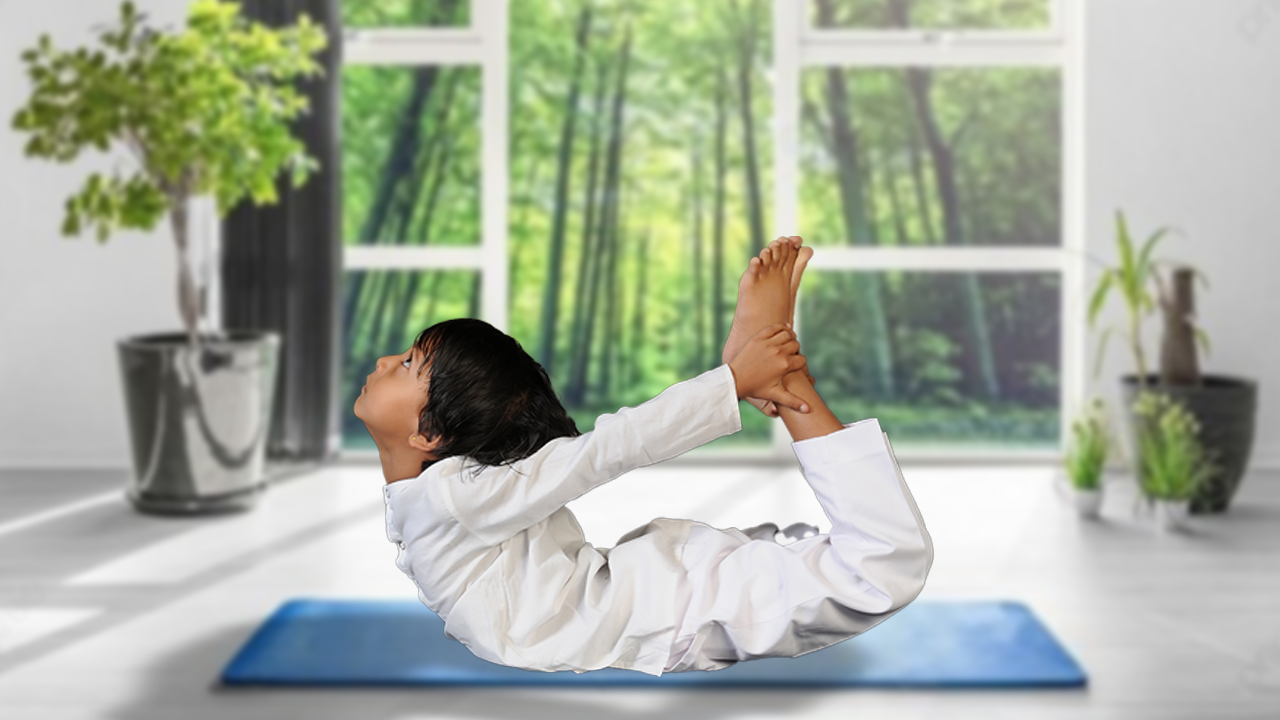
MEDITATION CLASSES
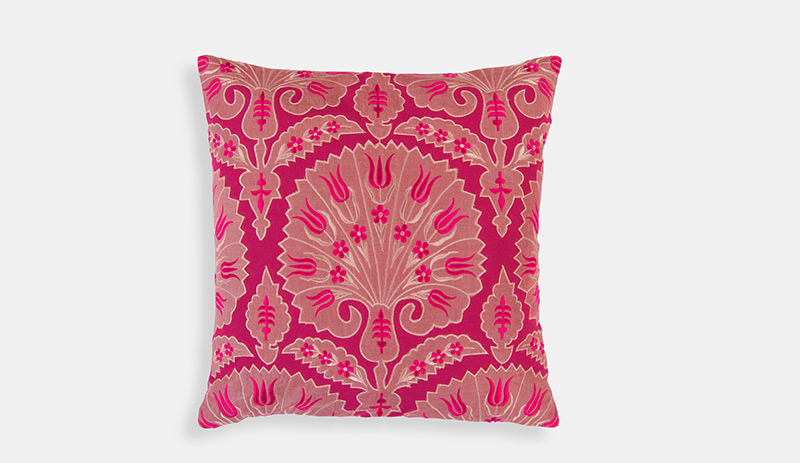
BEGINNER YOGA CLASSES
Yoga workshop
Come in Connect to the yoga classes
Saturday :
Sunday :
Sunday :
1.00 am - 6.00 pm
9.00am - 11.00am
4.00pm - 6.00 pm
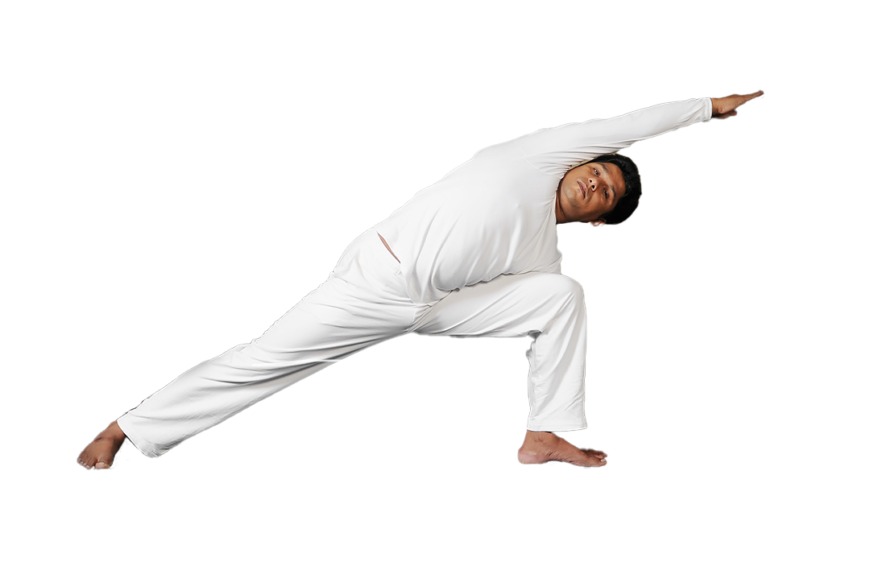
SIGN UP FOR OUR CLASSES
We’d love to hear from you
let's connect!
For more information about our Yoga classes or private Yoga classes
Sri Lanka
-
077 4108419
071 5506092
037 2284037 - yogatherapy@gmail.com
- NO: 171, Assadduma, Kuliyapitiya
